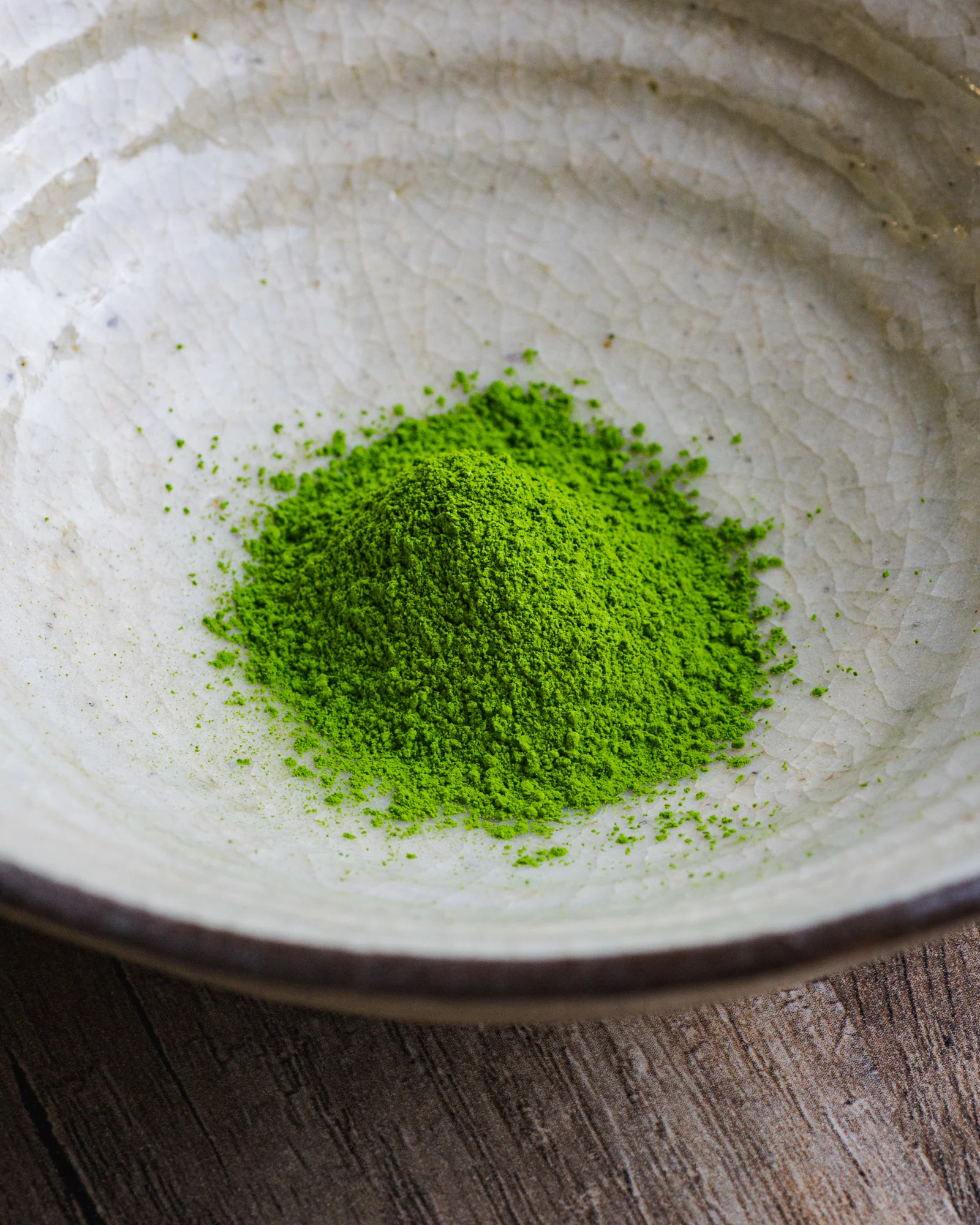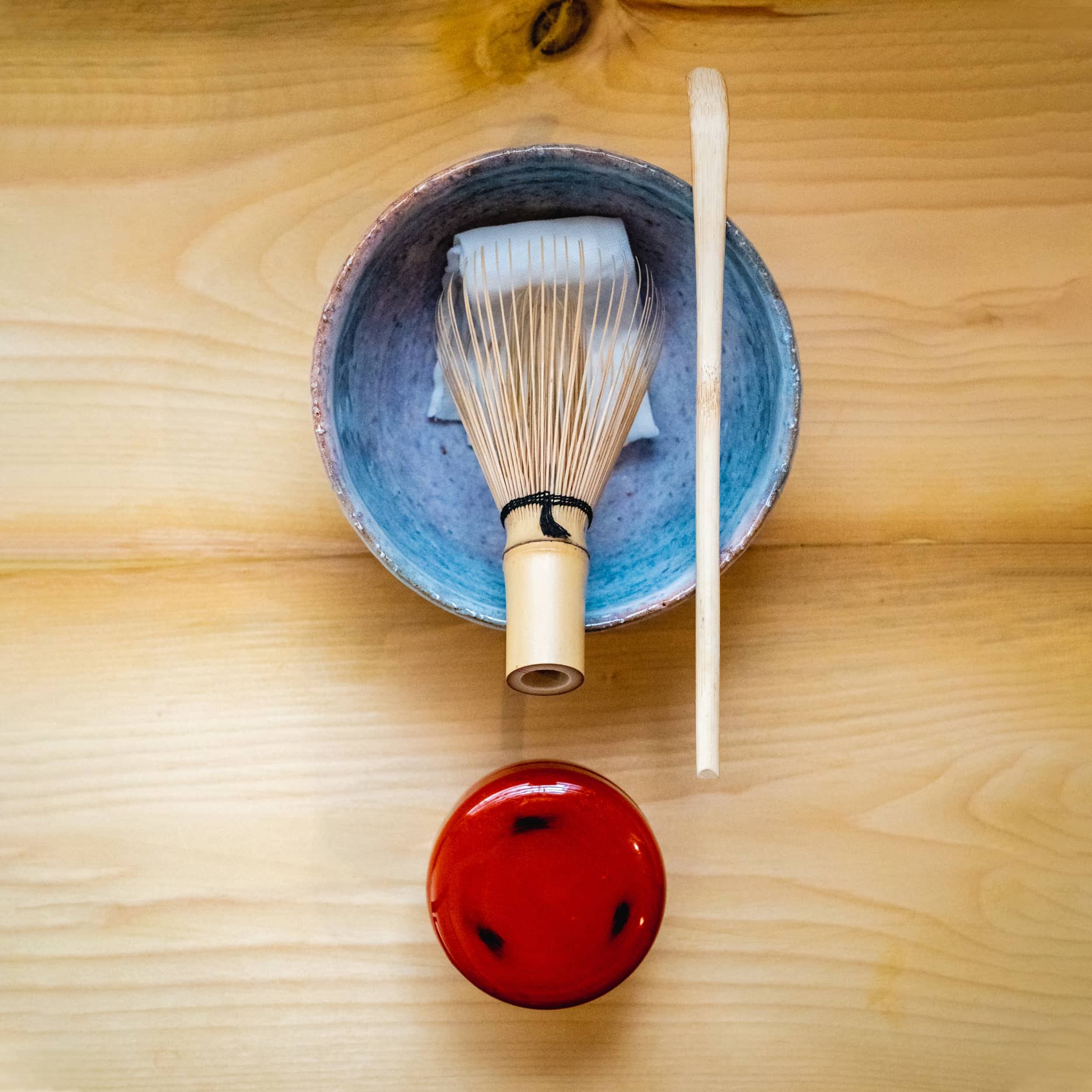Why "Ceremonial Grade" is Meaningless
If you’ve ever gone shopping for matcha (and if you’re reading this blog post, then I’m sure you have), you’ve undoubtedly come across the term ‘ceremonial grade’ plastered on a can’s label or an online product description. You may have even been told only to buy matcha that bears this term. We’re often asked why none of our matcha uses this label and so I thought that it was about time that I answered that question properly and thoroughly.
While I’ve touched on this topic before (when writing about matcha myths and how to shop for matcha) here I’ll take a deeper look at this term and why it is reductive, meaningless, and ultimately harmful to a good and nuanced understanding of tea culture and tea quality.
In short, the main reasons are as follows:
- It is undefined and unregulated
- It ignores the range of matcha quality used in real chanoyu (tea ceremony) settings
- It ignores differences in matcha styles preferred in chanoyu settings
- It is often used to evoke the artistic and cultural practice that is chanoyu by companies who do not actively participate in, share, or promote this culture
What Does “Ceremonial Grade” Mean?
Simply put, nothing. “Ceremonial Grade Matcha” is entirely undefined and unregulated — there is no central organisation, in Japan or abroad, that sets standards for the use of this term. In practice, this means that anyone can slap this label on a tea regardless of its origin or quality. Because every company has their own definition and standards for what constitutes “ceremonial grade”, the term becomes useless when comparing teas across brands.
Even in Japan, matcha production, labelling, and marketing is not is not strictly regulated. Instead, only tencha, the raw material that is ground into matcha, is regulated when is sold on the wholesale market to matcha blenders and producers.
What ‘ceremonial grade’ is trying to say is that the matcha is suitable to be consumed in the traditional manner, i.e. simply with hot water as usucha. The term likely arose to create a distinction between from the lower quality teas that have flooded the marketplace as matcha’s popularity has continued to grow.
While in theory, this is a useful distinction, marking it as a grade instead of a simple serving recommendation belies the fact that no such grading system exists. Additionally, dragging in an association with chanoyu via the term ‘ceremonial’ implies that the matcha is of the quality and style that is preferred in the chashitsu, which may or may not be the case.
What Style of Matcha is Used in Chanoyu?

While on the topic of matcha used in chanoyu, let’s take a quick look at what type(s) of matcha are actually used by chanoyu practitioners. Almost exclusively, the matcha used in the tearoom is made from blended tencha, rather than single origin/cultivar, as to provide a more crafted, nuanced, consistent, and reliable flavour profile. Each specific blend from a given producer will bear a poetic name, typically in the form ___-no-___, such as our Uta-no-Mori or Kiku-no-Sono. A lot of the super traditional names end in no-Mukashi or no-shiro, which, depending on the producer, could indicate when it was picked or if it’s intended for usucha or koicha.
Even as single origin and single cultivar matcha have become increasingly popular, especially overseas, this named and blended style is the standard for matcha, both in and out of the tearoom. This is another reason why the term ‘ceremonial grade’ can be problematic, as it is often applied to single origin teas without a poetic name, which would not traditionally be served in a ceremonial setting.
How is matcha labelled and sold in Japan without the term “Ceremonial Grade”?
Most tea ceremony practitioners, or chajin, think of matcha in two basic grades: lower quality (but still very high-quality) tea suitable for serving as usucha and extra-high quality tea suitable for serving as koicha. While standards have changed over the years and continue to vary from company to company, most traditional matcha producers continue to blend their tencha into these two categories.
Occasionally, you might find matcha sold as ‘suiatable for keiko’, which means that is still a ‘drinking grade’ tea but of a lower and more affordable quality meant for use in tea ceremony lessons and practice (both known as keiko), as opposed to the usucha and koicha classifications which are for serving guests at a chakai or chaji. Confusingly, all three of these ‘use case categories’ would fall under the label ceremonial grade, which makes the term even less meaningful.
You might ask ‘what actually separates the quality of keiko, usucha, and koicha labelled teas?’. These three categories exist on a complex spectrum of quality but ultimately taste is what is used by chajin to determine what tea is suitable for each use case. Matcha for koicha should have little to no bitterness and should be smooth and mellow. Matcha for usucha should be a little more bright and can have a little bitterness as it will not be served in as concentrated a form. Matcha for keiko should be good enough to drink as usucha but not so high-quality and expensive that it makes practice cost-prohibitive.
While I’ve mentioned repeatedly that there are no regulations or guidelines that prescribe matcha quality, there are some rough commonalities found across producers who use these labels:
Koicha:
- Always stone-ground from first flush tencha
- Typically only hand-picked tencha
- Often tencha grown shizen-shitate and shelf-shaded
- Typically blended using only or predominantly higher-grade cultivars, such as Gokou, Samidori, Asahi, Uji-Hikari, etc.
Usucha:
- Always stone-ground from first flush tencha
- Often mechanical harvest or a mix of mechanical and hand-picking
- Often tencha grown une-shitate and shelf or direct shaded
- Typically include more basic cultivars as the base of the blend, such as Yabukita and Okumidori
Keiko:
- Always stone-ground from first flush tencha
- Often mechanical harvest or a mix of mechanical and hand-picking
- Often tencha grown une-shitate and direct shaded
- Typically blended predominantly from basic cultivars
Of course, each producer sets their own lines between these grades there is often significant overlap. Additionally, there can be a huge spectrum of price and quality within such tiers.

Single Origin Matcha

Single origin and especially single cultivar teas are very recent phenomena in the history of matcha and as such have yet to find their place in the chashitsu (tea room). While some of these teas can be incredibly high-quality, they are simply not of the style preferred by most chanoyu practitioners. As such, labelling these teas as ‘ceremonial grade’ is a bit misleading as they would likely never be served in the tearoom (unless the host is particularly avant-garde).
Single origin matcha tends to have flavour profiles with extremely pronounced taste notes that showcase the unique taste of a particular cultivar and region, whereas the blends made for chanoyu generally lean towards balance and complexity in their profiles.
Most single origin teas are also sold by harvest year, i.e. when you buy a single origin matcha, all of the tea in it was picked in the same year. This is part of what makes these teas really interesting, as they are a more transparent expression of the agricultural side of tea. However, this means that the taste can vary widely and unpredictably from year to year as the differences in annual climate can have a very pronounced effect on the taste. Additionally, disease or frost damage can severely reduce the yield of a given tea one year, leading to reduced production.
The unpredictability and inconsistency of these teas, coupled with their less complex taste profile and lack of poetic name means these teas are not particularly desirable to many chajin. Imagine having to host a chakai (tea gathering) for 10 people, and stressing about scheduling, kimono, food, ceramics, scrolls, lacquerware, etc. The last thing you'd want is to gamble on a tea. In such situations, the tried and true blends are a reliable fall back.
Blended matcha marketed towards chajin is incredibly consistent as the tencha that goes into them changes each year to make sure that the end product stays as identical as possible. On top of that, the previous year's harvest (well stored, of course) is blended into the current harvest to provide a seamless transition. By constantly adjusting blend ratios between ingredient tencha and harvest years, producers can keep the final taste profile almost perfectly consistent and reliable.
A Personal Issue with the term 'Ceremonial Grade'
As a chajin myself, who is deeply invested and interested in carrying on this unique cultural and artistic legacy with as much respect, reverence, and accuracy as I can, it is disappointing to see it being reduced, misrepresented, and commodified, especially when done so by those who neither participate in chanoyu nor care to learn about it or spread its culture. The continued use of this term spreads misinformation about both the agricultural and artistic sides of the Japanese tea world.
No one has to be an expert on either to enjoy matcha, but you would hope that those that sell it would have a better understanding and respect for the culture they are interacting with.
Non-Drinking Grade Matcha

As mentioned above, the term “ceremonial grade” is often used to create a distinction from lower quality teas that are sold under the name ‘matcha’. These include teas designed for use in confectionaries, baked goods, lattes, and and various 'superfood blends'. Like teas branded as ‘ceremonial’ this culinary or food processing ‘grade’ also spans a wide range of quality, from teas that are just a little too bitter to be consumed as usucha to powdered 4th flush sencha that should not be allowed to be sold as 'matcha'. As there is also no centralised or regulated naming convention, culinary matcha quality can also vary wildly between brands and producers.
Some of the shortcuts that can lead to lower quality matcha or teas falsely branded as matcha can include:
- Shorter or no shading time
- Riding-style mechanical harvest
- Cheaper cultivars (usually just Yabukita)
- Picking non-first flush tea (technically not matcha)
- Not stone-ground (arguably technically not matcha)
- Not grown in Japan (technically not matcha)
The Truth about Matcha Quality…
…is complicated and non-linear. Many steps go into the cultivation and production of matcha and each one impacts the quality of the final bowl. There is no one 'best' matcha as this style of tea comes in so many styles, each with their own merits and considerations. Lumping these all together under the meaningless umbrella term of 'ceremonial' erases this variety, which should instead be experienced and appreciated.
To learn more about the cultivation and harvest of tencha, you can read our post about it here (and be sure to check back when we post about tencha is produced, refined, and processed into matcha)

Matcha











